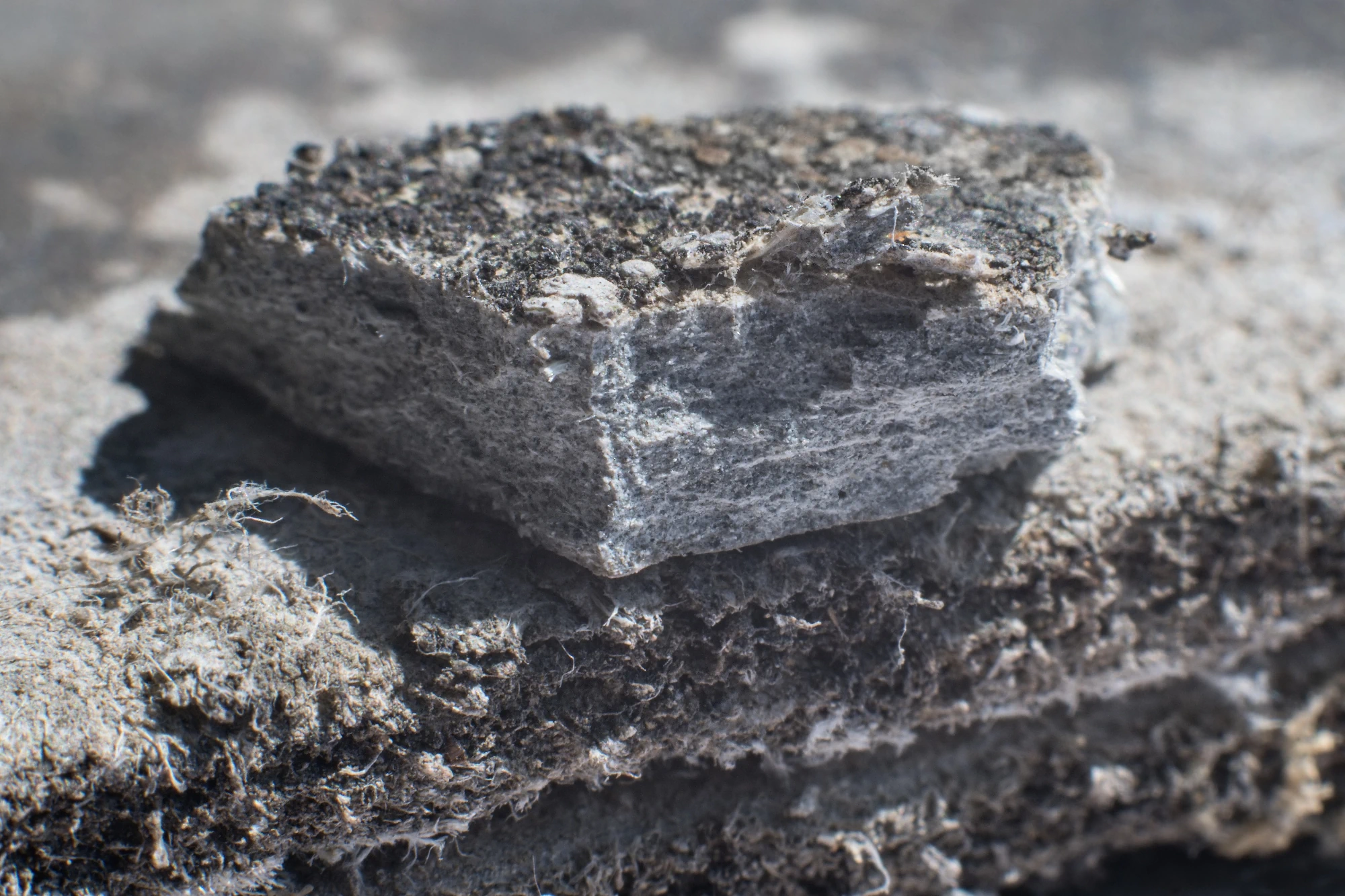

A complete guide to asbestos regulations in the UK
The insidious nature of asbestos has cast a long and tragic shadow over the UK’s industrial and domestic landscape. From its widespread application in construction and manufacturing to the devastating health crisis it caused, its eventual ban in the late 1990s marked a crucial turning point. However, the legacy of its past use continues to pose significant challenges, necessitating stringent regulations and a vigilant approach to its management.
The rise of asbestos in the UK
Asbestos, a naturally occurring fibrous mineral, was first commercially mined in the late 19th century, but it’s true boom in the UK began in the early to mid-20th century. Its exceptional properties made it seem like an answer to a multitude of industrial needs. It was fire-resistant, heat-insulating, strong, flexible and surprisingly cheap.
The shipbuilding industry was a key adopter of asbestos. It was applied extensively for insulation in boilers, pipes and engine rooms, protecting against the intense heat generated. Power stations, also relied heavily on asbestos for insulating turbines, pipes and other high-temperature equipment.
In construction, asbestos was incorporated into a vast array of materials. Asbestos cement sheets, known for their durability and fire resistance, were used for roofing, cladding and even drainage pipes. Asbestos insulation board (AIB) was a common choice for partitions, ceiling tiles and fireproofing. Sprayed asbestos coatings were applied to structural steelwork for fire protection, while asbestos textiles were woven into fire blankets and protective clothing. Even everyday items like brake linings, clutch facings and ironing board covers contained asbestos.
Countless workers across diverse sectors, from factory operatives to construction workers, plumbers, electricians and even teachers, were routinely exposed to its fibres. The latency period of asbestos-related diseases (often taking 20 to 50 years to manifest) meant that the devastating consequences of exposure were not immediately apparent.
The asbestos ban
The realisation of asbestos’s deadly nature was a gradual and painful process, driven by persistent advocacy from victims, trade unions and medical researchers. Early warnings emerged in the first half of the 20th century, with some medical practitioners identifying lung scarring in asbestos workers. The term ‘asbestosis’ was coined in the 1920s, and by the 1930s, the UK introduced its first, limited regulations for asbestos factories.
Throughout the post-war boom, asbestos usage continued to soar. It was the growing number of mesothelioma diagnoses, a particularly aggressive and incurable cancer almost exclusively linked to asbestos exposure, that amplified the alarm bells in the latter half of the 20th century. This was coupled with rising cases of lung cancer and asbestosis among those with occupational exposure, built an undeniable case for stronger action.
The scientific consensus became overwhelming: all types of asbestos were carcinogenic. This led to a phased ban. In 1985, the UK banned the import and use of blue (crocidolite) and brown (amosite) asbestos, the most dangerous forms. However, white (chrysotile) asbestos, often argued to be less harmful, remained in use.
It wasn’t until 1999 that a comprehensive ban on all types of asbestos came into force in the UK, making the import, supply and use of all asbestos-containing materials (ACMs) illegal. This landmark decision brought Britain in line with many other European countries and marked the end of new asbestos use.
Asbestos regulations in the UK
Despite the 1999 ban, asbestos-containing materials are still present in millions of buildings across the UK, particularly those built or refurbished before the year 2000. This presents a significant ongoing risk, as disturbed or damaged ACMs can release dangerous fibres into the air.
To manage this enduring threat, the UK has established robust legislative frameworks, primarily the Control of Asbestos Regulations 2012 (CAR 2012).
These regulations are comprehensive and legally binding, aiming to protect workers and the public from asbestos exposure. They place duties on specific individuals and organisations that are focused on the identification, management and safe removal of asbestos.
Who do the regulations apply to?
CAR 2012 places significant duty to manage asbestos on the following:
Owners of non-domestic premises
This encompasses a vast range of buildings, including workplaces, factories, offices, shops, schools, hospitals and public buildings.
Those who have control over non-domestic premises
This could be managing agents, landlords or tenants with repair and maintenance responsibilities. Even if they don’t own the building, if they have a degree of control over its maintenance or repair, they fall under this duty.
Employers
Employers have a general duty to protect their employees from harm, which extends to asbestos exposure in the workplace.
It’s important to note that the duty to manage applies to common parts of multi-occupancy domestic premises (e.g., blocks of flats), such as hallways, stairwells, lift shafts and boiler rooms. While it doesn’t generally apply to individual domestic homes, contractors working in these homes (e.g., plumbers, electricians) still have a responsibility under other health and safety legislation to protect themselves and others from asbestos.
Key aspects of the Control of Asbestos Regulations 2012
CAR 2012 mandates a proactive approach to asbestos management. Key requirements include:
- The overarching requirement for duty holders to take reasonable steps to find out if ACMs are present and, if so, their location, type and condition.
- Creating and maintaining an up-to-date register of the location and condition of any ACMs.
- Developing a plan that details how the risks from these ACMs will be managed. This includes decisions on monitoring, repair, encapsulation or removal.
- Ensuring that anyone who might disturb asbestos (e.g., contractors carrying out work) is provided with clear, up-to-date information about its presence and location.
- Ensuring that anyone liable to disturb asbestos during their work receives appropriate training.
- Strict regulations govern any work involving asbestos, including licensing requirements for high-risk removal, specific control measures and waste disposal.

The risks of non-compliance
Failing to comply with asbestos regulations carries severe consequences, extending far beyond mere legal penalties. The risks are profound and multifaceted, impacting individuals, organisations and reputations.
Legal risks
The legal ramifications for non-compliance are substantial. The Health and Safety Executive (HSE) is the enforcing authority for asbestos regulations in the UK and has significant powers to prosecute breaches.
- Individuals and companies can face criminal prosecution under the Health and Safety at Work etc. Act 1974 and CAR 2012. This can lead to unlimited fines for organisations and, for individuals, imprisonment and/or substantial fines.
- The HSE can issue notices requiring duty holders to take specific actions to comply with regulations (Improvement Notices) or to stop work immediately if there’s an imminent risk of serious personal injury (Prohibition Notices). Failure to comply with these notices is a criminal offence.
- Victims of asbestos exposure who contracted diseases due to negligence or breach of duty can pursue substantial civil compensation claims against responsible parties. These claims can be for millions of pounds and can extend decades after initial exposure.
- Legal action and publicised failures to manage asbestos can severely damage an organisation’s reputation.
Ethical risks
Beyond legal obligations, there is a profound ethical imperative to manage asbestos responsibly.
Duty holders have a moral obligation to protect the health and safety of anyone who uses or works within their premises. Asbestos exposure has a long latency period, and ethical considerations require foresight and a commitment to protecting future generations. Organisations that fail to manage asbestos betray the trust placed in them by their employees and the public.
Financial risks
The financial penalties for non-compliance can be devastating, far outweighing the cost of proactive asbestos management.
- Defending against HSE prosecutions and civil claims is extremely expensive, involving significant legal fees, expert witness costs, and court expenses.
- Civil compensation claims for asbestos-related diseases can be astronomically high, covering pain and suffering, loss of earnings, medical care and dependants’ losses. These payouts can severely impact a company’s financial stability or even lead to bankruptcy.
- Companies with a poor safety record regarding asbestos may face significantly higher insurance premiums or even difficulty obtaining coverage.
- Prohibition notices or extensive remediation work can lead to significant business interruption, loss of productivity and disruption to operations.
- Properties with known, unmanaged asbestos can be devalued, making them harder to sell or lease. The cost of future removal will also be factored in.
In conclusion, the journey of asbestos in the UK, from its perceived utility to its eventual ban, serves as a powerful cautionary tale. While the active use of asbestos has ceased, its enduring presence in countless buildings necessitates unwavering vigilance and strict adherence to regulations.
Navigating the complexities of asbestos management can be challenging. Henderson Environmental stands as a leading expert in asbestos services in the North East, with over 40 years of experience in safely managing and removing asbestos-containing materials. Based in Gateshead, we have a team of licensed and accredited specialists provides comprehensive solutions for residential, commercial and industrial properties across the region.
Whether you require the safe and efficient removal of licensed or non-licensed asbestos or expert asbestos encapsulation services, we offer tailored support. Our commitment to high standards of workmanship ensures full compliance with ARCA guidelines and all relevant health and safety regulations, helping you to mitigate legal, ethical, and financial risks.
By partnering with trusted professionals like us, you can ensure the safety of your building’s inhabitants and safeguard your reputation.



